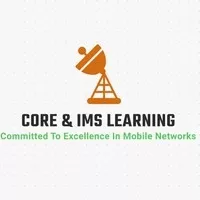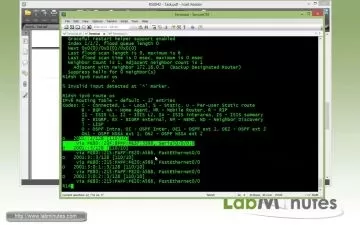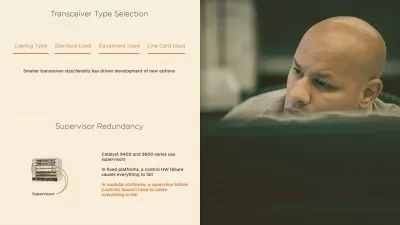Learn Voice, Packet & EPC Core Networks in 2G, 3G & 4G-LTE
Core & IMS Learning
12:55:41
Description
Learn Basics & Essentials of CS, PS & EPC Core Networks from 2G to 4G-LTE & CSFB , and Become an expert in this track
What You'll Learn?
- Understand basics of Mobile Core Networks
- Be proficient with different Core Networks CS, PS & EPC CSFB
- Real-world skills required for job in any telecom operator or vendor company
- Basics of Core Networks
- Architecture of Core Networks
- Call flows & Different Procedures in Mobile Core
- Mobile & Network Identifiers
- CSFB Circuit Switching Fallback
- VoLTE
Who is this for?
More details
DescriptionThis course will provide an introduction to Mobile Core Networks that have changed our lives during the recent four decades and will become an essential and inseparable part of human life. First basic concepts of cellular communication systems are discussed, then we describe how they are applied in actual 2G, 3G, 4G and 5G Systems. The emphasis is on the essential concept delivery to non-major learners in the easiest way.
Mastering the core Networks in wireless communications can get you a job in telecom companies and if you already have one it will help you to move ahead in your career, increase your earning potential and add value to any organization.
This course is designed to provide students with in-depth information regarding Core Network architecture. The course has been designed for all levels and starts off by providing the introduction to Core Split Architecture and its advantages over legacy technologies.
During the lectures, all concepts are introduced by means of intuitive diagrams and real-network examples whenever possible.
The Course is divided into 3 main parts:
1st Part: Mobile CS Voice Core Concepts in 2G GSM, 3G UMTS & 4G-LTE (CSFB)
This part focuses on the legacy core Networks used in 2G GSM & 3G UMTS & 4G (CSFB).
In brief it talks mainly about the CS Core Networks which are used in Voice calls & SMS in legacy networks.
2nd Part: Mobile Packet Switching Core Networks
In this part you will Learn Basics & Essentials of Packet Core Networks in Telecom Field ( PS Packet Switching in 2G GSM, 3G UMTS )
This part is designed for who ever interested in packet Data Core Networks ( PS Packet Switching )
The Course will contain every thing related to the Packet Data Networks in 2G, 3G.
3rd Part: 4G LTE EPC, E-UTRAN Concepts, Architecture & call flows
This part aims to provide a concise synopsis of how LTE EPC operates, focusing on the driving factors behind LTE EPC, as well as the architectural view of an LTE EPC & E-UTRAN deployment. Operational procedures such as network attach and bearer utilization will be examined, as well as key mobility and roaming considerations. Finally, LTE voice solutions will be highlighted, with focus on CSFB and VoLTE.
Course Duration
This course is around 16 Hours duration.
Mobile CS Voice Core Concepts in 2G GSM, 3G UMTS & 4G-LTE (CSFB)
1.1 CS Core Introduction
1.2 What is the integrated Core Network in 2G, 3G & 4G Network ?
1.3 Difference Between Horizontal & Vertical Core Networks
1.4 High Level view about CS Core Nodes, & used Protocols
1.5 Split Architecture From MSC to MSC-S and MGW
1.6 Access/Radio RF Network Structure
1.7 MSCS | Mobile Switching Center Server
1.8 MGW | Media Gateway
1.9 HLR | Home Location Register
1.10 SMSC | SMS Server
1.11 EIR | Equipment Identity Register
1.12 What is the CS Core Network Identities ?
1.13 IMSI & MSISDN | Mobile Station ISDN Number
1.14 IMEI & IMEI SV | International Mobile equipment Identity
1.15 IMEI check call flow
1.16 TMSI | Temporary Mobile Subscriber Identity
1.17 MGT | Mobile Global Title
1.18 MSRN | Mobile Station Roaming Number
1.19 Location Identities in CS Core
1.20 Basic Procedures in CS Circuit Switching Core Network
1.21 IMSI Attach Signaling Procedures
1.22 Authentication Procedures
1.23 Ciphering Procedures
1.24 Purge MS
1.25 What is meant by Location update & what is its types ?
1.26 Normal Location Update Procedures
1.27 IMSI Attach Signaling Procedures
1.28 IMSI Detach Signaling Procedures
1.29 Periodic Location update Procedures
1.30 Combined Attach Procedures
1.31 Independent Location update
1.32 Data Recovery Location Update
1.33 Location Update while Roaming
1.34 Call Flow MO/MT Signaling Procedures
1.35 SMS call flow
1.36 MSC in Pool
1.37 CSFB Circuit switching fallback Methodology/Scenarios
Mobile Packet Switching Core Networks
2.1 Introduction to Mobile PS Data Core
2.2 PS Core Architecture Part:1
2.3 PS Core Architecture Part:2
2.4 Identifiers in PS Core
2.5 Interfaces in Packet Core Network
2.6 PDP Context & its characteristics part:1
2.7 PDP Context & It’s Characteristics Part1
2.8 PDP Contexts & Its Characteristics Part2
2.9 PDP Context & its characteristics part3
2.10 UE State Management in PS Core Networks
2.11 Contexts in PS Core Networks
2.12 Mobility Timers in Packet Core Networks
2.13 Signaling Scenario Procedures in PS Core Network Part:1
2.14 Signaling Scenario Procedures in PS Core Network Part:2
2.15 PS data Core key features
4G LTE EPC, E-UTRAN Concepts, Architecture & call flows
3.1 Basic Introduction to EPC Packet Networks
3.2 3GPP Evolution from 2G,3G to 4G
3.3 4G Evolution in Network Services
3.4 4G Evolution in Network Architecture
3.5 E-UTRAN Architecture
3.6 EPC Architecture Part:1
3.7 EPC Architecture Part:2
3.8 Evolved Packet Core Interfaces
3.9 Evolved Packet Core Identifiers
3.10 PDN Connectivity Service
3.11 PDN Address in PDN Connectivity Services
3.12 Default & Dedicated EPS Bearers
3.13 QOS Quality of Service
3.14 ARP Allocation & Retention Priority
3.15 QCI QOS Class Identifier
3.16 Digging Deeper into EPS Bearers
3.17 TFT Traffic Flow Templates
3.18 EPC | Evolved Packet Core Contexts
3.19 Attach Procedures Signaling | Attach Step
3.20 Attach Procedures Signaling | Authentication Step
3.21 4G Attach Procedures EPS Est. step
3.22 Attach Procedures Signaling | Tracking Area Update Step
3.23 Detach Procedures Signaling
4 VoLTE & IMS Networks
Why to take the Course
If You are interested in the Telecom field, This course is the Best fit for you.
Course Support
Have you even took a Course and you didn't find the required Support?
Fine, This course is different, We are committed in making this course the best Telecom Course from the support perspective.
In This course we are not talking about a specific vendor Solution, But we are talking about Packet Core standards.
Are there any course requirements or prerequisites?
No prerequisites are required to take this course, Don't worry this course is designed for beginners.
Who this course is for:
- Complete beginners who want to learn about mobile cellular Networks
- Students with some knowledge about telecommunications, who want to explore further
- IT Professionals who want to learn about Cellular Networks
- Diploma holders who want to learn about Cellular Networks
This course will provide an introduction to Mobile Core Networks that have changed our lives during the recent four decades and will become an essential and inseparable part of human life. First basic concepts of cellular communication systems are discussed, then we describe how they are applied in actual 2G, 3G, 4G and 5G Systems. The emphasis is on the essential concept delivery to non-major learners in the easiest way.
Mastering the core Networks in wireless communications can get you a job in telecom companies and if you already have one it will help you to move ahead in your career, increase your earning potential and add value to any organization.
This course is designed to provide students with in-depth information regarding Core Network architecture. The course has been designed for all levels and starts off by providing the introduction to Core Split Architecture and its advantages over legacy technologies.
During the lectures, all concepts are introduced by means of intuitive diagrams and real-network examples whenever possible.
The Course is divided into 3 main parts:
1st Part: Mobile CS Voice Core Concepts in 2G GSM, 3G UMTS & 4G-LTE (CSFB)
This part focuses on the legacy core Networks used in 2G GSM & 3G UMTS & 4G (CSFB).
In brief it talks mainly about the CS Core Networks which are used in Voice calls & SMS in legacy networks.
2nd Part: Mobile Packet Switching Core Networks
In this part you will Learn Basics & Essentials of Packet Core Networks in Telecom Field ( PS Packet Switching in 2G GSM, 3G UMTS )
This part is designed for who ever interested in packet Data Core Networks ( PS Packet Switching )
The Course will contain every thing related to the Packet Data Networks in 2G, 3G.
3rd Part: 4G LTE EPC, E-UTRAN Concepts, Architecture & call flows
This part aims to provide a concise synopsis of how LTE EPC operates, focusing on the driving factors behind LTE EPC, as well as the architectural view of an LTE EPC & E-UTRAN deployment. Operational procedures such as network attach and bearer utilization will be examined, as well as key mobility and roaming considerations. Finally, LTE voice solutions will be highlighted, with focus on CSFB and VoLTE.
Course Duration
This course is around 16 Hours duration.
Mobile CS Voice Core Concepts in 2G GSM, 3G UMTS & 4G-LTE (CSFB)
1.1 CS Core Introduction
1.2 What is the integrated Core Network in 2G, 3G & 4G Network ?
1.3 Difference Between Horizontal & Vertical Core Networks
1.4 High Level view about CS Core Nodes, & used Protocols
1.5 Split Architecture From MSC to MSC-S and MGW
1.6 Access/Radio RF Network Structure
1.7 MSCS | Mobile Switching Center Server
1.8 MGW | Media Gateway
1.9 HLR | Home Location Register
1.10 SMSC | SMS Server
1.11 EIR | Equipment Identity Register
1.12 What is the CS Core Network Identities ?
1.13 IMSI & MSISDN | Mobile Station ISDN Number
1.14 IMEI & IMEI SV | International Mobile equipment Identity
1.15 IMEI check call flow
1.16 TMSI | Temporary Mobile Subscriber Identity
1.17 MGT | Mobile Global Title
1.18 MSRN | Mobile Station Roaming Number
1.19 Location Identities in CS Core
1.20 Basic Procedures in CS Circuit Switching Core Network
1.21 IMSI Attach Signaling Procedures
1.22 Authentication Procedures
1.23 Ciphering Procedures
1.24 Purge MS
1.25 What is meant by Location update & what is its types ?
1.26 Normal Location Update Procedures
1.27 IMSI Attach Signaling Procedures
1.28 IMSI Detach Signaling Procedures
1.29 Periodic Location update Procedures
1.30 Combined Attach Procedures
1.31 Independent Location update
1.32 Data Recovery Location Update
1.33 Location Update while Roaming
1.34 Call Flow MO/MT Signaling Procedures
1.35 SMS call flow
1.36 MSC in Pool
1.37 CSFB Circuit switching fallback Methodology/Scenarios
Mobile Packet Switching Core Networks
2.1 Introduction to Mobile PS Data Core
2.2 PS Core Architecture Part:1
2.3 PS Core Architecture Part:2
2.4 Identifiers in PS Core
2.5 Interfaces in Packet Core Network
2.6 PDP Context & its characteristics part:1
2.7 PDP Context & It’s Characteristics Part1
2.8 PDP Contexts & Its Characteristics Part2
2.9 PDP Context & its characteristics part3
2.10 UE State Management in PS Core Networks
2.11 Contexts in PS Core Networks
2.12 Mobility Timers in Packet Core Networks
2.13 Signaling Scenario Procedures in PS Core Network Part:1
2.14 Signaling Scenario Procedures in PS Core Network Part:2
2.15 PS data Core key features
4G LTE EPC, E-UTRAN Concepts, Architecture & call flows
3.1 Basic Introduction to EPC Packet Networks
3.2 3GPP Evolution from 2G,3G to 4G
3.3 4G Evolution in Network Services
3.4 4G Evolution in Network Architecture
3.5 E-UTRAN Architecture
3.6 EPC Architecture Part:1
3.7 EPC Architecture Part:2
3.8 Evolved Packet Core Interfaces
3.9 Evolved Packet Core Identifiers
3.10 PDN Connectivity Service
3.11 PDN Address in PDN Connectivity Services
3.12 Default & Dedicated EPS Bearers
3.13 QOS Quality of Service
3.14 ARP Allocation & Retention Priority
3.15 QCI QOS Class Identifier
3.16 Digging Deeper into EPS Bearers
3.17 TFT Traffic Flow Templates
3.18 EPC | Evolved Packet Core Contexts
3.19 Attach Procedures Signaling | Attach Step
3.20 Attach Procedures Signaling | Authentication Step
3.21 4G Attach Procedures EPS Est. step
3.22 Attach Procedures Signaling | Tracking Area Update Step
3.23 Detach Procedures Signaling
4 VoLTE & IMS Networks
Why to take the Course
If You are interested in the Telecom field, This course is the Best fit for you.
Course Support
Have you even took a Course and you didn't find the required Support?
Fine, This course is different, We are committed in making this course the best Telecom Course from the support perspective.
In This course we are not talking about a specific vendor Solution, But we are talking about Packet Core standards.
Are there any course requirements or prerequisites?
No prerequisites are required to take this course, Don't worry this course is designed for beginners.
Who this course is for:
- Complete beginners who want to learn about mobile cellular Networks
- Students with some knowledge about telecommunications, who want to explore further
- IT Professionals who want to learn about Cellular Networks
- Diploma holders who want to learn about Cellular Networks
User Reviews
Rating
Core & IMS Learning
Instructor's Courses
Udemy
View courses Udemy- language english
- Training sessions 57
- duration 12:55:41
- Release Date 2022/12/06















